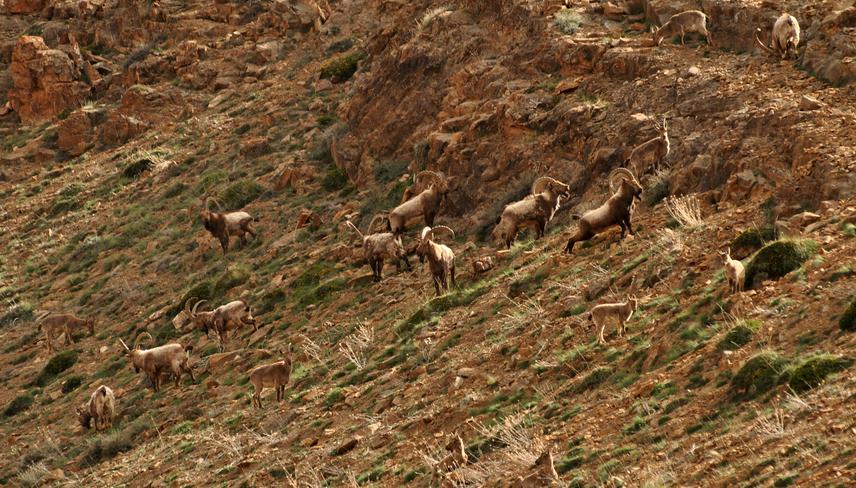Abhishek Ghoshal
The study will foster understanding the spread and dynamics of natural resource use by local and immigrant communities in the Spiti Valley, Himachal Pradesh, India.

A herd of ibex near Chichim village in Spiti. ©Abhishek Ghoshal.
The snow leopard is an important ecological and socio-cultural symbol of the Central and South Asian mountain ecosystems. Snow leopard is also the ‘flagship’ for conservation of the Indian Himalaya. In India, the snow leopard occurs across the Trans-Himalaya, withstanding threats such as intense livestock grazing, fuel-wood, fodder and medicinal plant collection and hunting. Snow leopard conservation programmes have identified resource extraction as a rapidly emerging threat to snow leopard habitat in the Spiti Valley, a stronghold of snow leopards and its primary prey, bharal and Asiatic ibex in India. Over the past decade, this landscape has experienced drastic developmental (hydro-electric projects, roads, tourism) and socio-economic changes thereby increasing resource extraction for sustenance and commercial purposes by local and immigrant communities. As this is a low productivity region, over-utilization of resources can have serious ecological consequences. Understanding and responding to the needs of the communities and integrating them into the formal conservation framework constitute the mandate of regional landscape management plan.
Basic management tools are urgently needed to define and address the issue of natural resource use by local communities recently coupled with extraction by immigrant communities. The strategy to involve the marginalized immigrant communities into the formal conservation framework through a bottom-up approach has not yet been experimented with.
The project aims to understand the spread and dynamics of natural resource use by local and immigrant communities. Questionnaire surveys and innovative interactive tools will be used to understand the factors influencing resource extraction. High resource extraction areas will be identified and mapped.
The success of the project will be measured using:
(i) a map showing the distribution and intensity of natural resource use
(ii) voluntary participation of the members of local and immigrant communities during interview surveys and resource mapping, willingness to contribute to our understanding of the issue and suggestions towards how best it can be addressed
(iii) participation of people during campaign workshops
(iv) comments and feedback from respondents during interviews and participants during meetings will help understand the extent and intensity of natural resource use in the landscape. We also expect this to shed light on the awareness levels amongst the immigrants, and will guide us towards possible education and management strategy that can be developed given the scenario.
The project will comprise the first step in initiating long-term collaborative landscape management mutually benefiting snow leopards and people using a bottom-up approach.